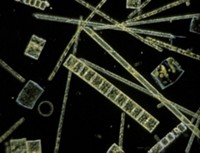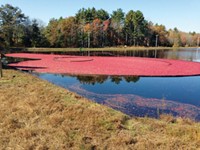Advertisement
Grab your lab coat. Let's get started
Welcome!
Welcome!
Create an account below to get 6 C&EN articles per month, receive newsletters and more - all free.
It seems this is your first time logging in online. Please enter the following information to continue.
As an ACS member you automatically get access to this site. All we need is few more details to create your reading experience.
Not you? Sign in with a different account.
Not you? Sign in with a different account.
ERROR 1
ERROR 1
ERROR 2
ERROR 2
ERROR 2
ERROR 2
ERROR 2
Password and Confirm password must match.
If you have an ACS member number, please enter it here so we can link this account to your membership. (optional)
ERROR 2
ACS values your privacy. By submitting your information, you are gaining access to C&EN and subscribing to our weekly newsletter. We use the information you provide to make your reading experience better, and we will never sell your data to third party members.
Environment
Mussels May Strong-Arm Nutrients In Great Lakes
Water Quality: Invasive mussels may disrupt phosphorus flow in Lake Huron
by Janet Pelley
August 16, 2011
Lake Huron’s ecosystems haven’t been the same since the early 1990s. In the lake’s open waters, the amount of the nutrient phosphorus, which feeds photosynthetic organisms at the base of the lake’s food web, has dropped. Meanwhile, massive algal blooms cloud the nearshore shallow waters. A new study suggests that invasive mussels triggered this change by sequestering the phosphorus near the lakes’ shores (Environ. Sci. Technol., DOI: 10.1021/es2014715).
Zebra mussels (Dreissena polymorpha) and quagga mussels (Dreissena rostriformis bugensis) showed up in Lake Huron in 1990, probably carried by cargo ships from Europe. Previous research has shown that these mussels can filter out particulate matter and deposit it on the lake bottom, making lake water crystal clear, says Craig Stow, a limnologist at the National Oceanic and Atmospheric Administration’s Great Lakes Environmental Research Laboratory. Some scientists think that the mussels are also responsible for the lower phosphorus levels in the lake’s open waters.
According to this so-called nearshore shunt hypothesis, the bivalve invaders absorb phosphorus when they feed on plankton and other microorganisms, and then they excrete any excess phosphorus into the sediment. Since the mussels capture phosphorus as it enters the lake from rivers, they sequester the nutrient along the lake’s shallow shoreline, preventing it from reaching the rest of the lake.
Stow and his colleagues modeled phosphorus flows in Lake Huron’s Saginaw Bay. The bay is a microcosm for the lake as a whole: The bay’s inner portion is shallow and home to regular algal blooms, while the outer, deep waters are clear.
The researchers compared phosphorus loads in river water flowing into the bay, phosphorus concentrations in the water, and the amount of the nutrient flowing into the outer bay. To determine how much phosphorus remained in nearshore organisms and sediments, they calculated the difference between incoming and outgoing phosphorus levels.
According to the scientists’ model, the proportion of incoming phosphorus retained near the shore increased from 46 to 70% after the mussel invasion. Because Saginaw Bay supplies as much as 40% of Lake Huron’s annual phosphorus, the bay’s drop in phosphorus export could partially explain why lake phosphorus levels are so low, Stow says.
The study presents “the most convincing case” that invading mussels may intercept phosphorus in the Great Lakes and redirect it to nearshore waters, says Robert Hecky, a limnologist at the University of Minnesota, Duluth. However, Steven C. Chapra, an environmental modeler at Tufts University, cautions that the paper doesn’t prove that the mussels deposit the phosphorus into the sediment. He suggests that the researchers collect sediment cores to measure phosphorus deposition rates over time. Stow and his team already plan to collect these samples.





Join the conversation
Contact the reporter
Submit a Letter to the Editor for publication
Engage with us on Twitter